From our initiation into Freemasonry we are made very aware of the story of the First Temple, the building which is the very basis of the rituals that permeate our entire Craft. In the three degrees of Craft Masonry we learn that it was built on land acquired by King David, by his son, Solomon, aided by his friend King Hiram of Tyre and the Architect, Hiram Abiff.
On reaching the dizzy heights of Master Mason, we are then encouraged to complete our three degrees by joining the Royal Arch which deals with the rebuilding of the Temple that had been destroyed by the Babylonians. Other aspects of the actual building work occur in the Mark degree which some of us also join. As far as I know, there is no reference in our rituals to the rebuilding of the Second Temple by King Herod -the Temple which the Romans destroyed.
Little is known of King Herod 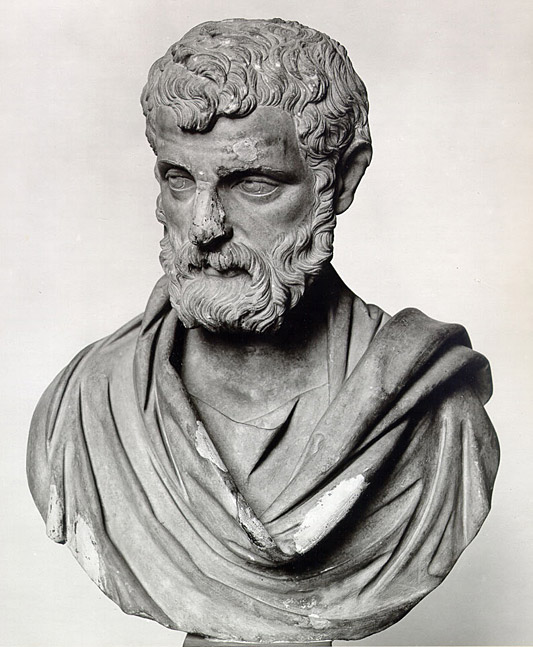 despite the fact that he was one of the most glittering figures of one of the spectacular periods of human history. There are few characters of the time of which so much is recorded but who are so little remembered. As the stories of the first and second Temples form the basis of the Craft and the Royal Arch it is perhaps surprising that the story of the “Third Temple” – for, that is what it really was – and its builder, has never been told in Freemasonry.
despite the fact that he was one of the most glittering figures of one of the spectacular periods of human history. There are few characters of the time of which so much is recorded but who are so little remembered. As the stories of the first and second Temples form the basis of the Craft and the Royal Arch it is perhaps surprising that the story of the “Third Temple” – for, that is what it really was – and its builder, has never been told in Freemasonry.
Certainly neither he nor his works have ever been the subject of an extension to an existing degree or a separate degree in Masonry, but as I hope I will show, Herod was undoubtedly a Master Mason. He not only rebuilt the Temple but he also organised much rebuilding of Jerusalem and in many other parts of the Kingdom of Judaea which he ruled on behalf of the Romans. What is more, whereas there is absolutely no trace of the First Temple and only a little of Second Temple, some of Herod’s building is available for inspection today, 2000 years after his death.
Of course, one of the reasons for Freemasonry ignoring this final aspect of the Temples in its rituals, is the nature of the man himself. For all of us, the name Herod immediately indicates cruelty. He was the man who massacred the Innocents, he was the one before whom Christ appeared for trial, and who procured the death of St. John the Baptist to satisfy the adulteress, Salome.
Not a good example for moral and upright Masons. Can you imagine our enemies’ joy if it were shown that the Heroes in our Masonic Rituals included not only Solomon, Hiram, 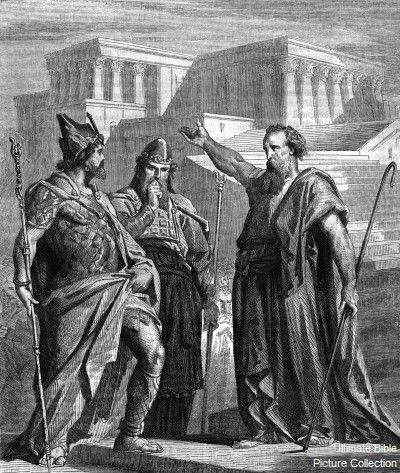 Zerubbabel, and the rest, but also Herod?
Zerubbabel, and the rest, but also Herod?
The massacre of the Innocents of which Herod is considered the perpetrator, however, is only mentioned in one of the four Gospels – the one written by Mark – and is almost certainly not true, or perhaps relates to a minor incident. There is no mention of it either in the other Gospels or in the writings of Josephus, who hated Herod, and would certainly have included such a story in his History of the Jews. It is possible that it relates to an incident from one of the succeeding generations because of the custom of sons being named after their fathers, and it is easy to blur all the Herods into one. It is possible that it was an invention of Mark, to make Herod seem even more wicked than he was. The balance of opinion in the researches I have made on this particular subject leaves me thinking that it possibly never happened, and if it did, it was to a very small number (probably not more than ten) of boys in the small town of Bethlehem.
The Hasmoneans had secured their ruling position in Judaea by an alliance with the Roman Empire. But within a few years the last of their kings, Hyrcanus II, surrendered his throne to the Romans under Pompey although still remaining the nominal ruler of the country under Rome. But as he was a weak and feeble character, the affairs of the country were really in the hands of his chief minister Antipater. He was an Idumean and the Idumeans were Arabs, although they were long time adherents of the Jewish monotheistic religion.
Antipater and his wife, Cypros, had four sons – the eldest, Phaesel, was followed by Herod, then Joseph, then Pheroras, and finally a daughter, Salome. Herod’s exact year of birth is unknown but is thought to have been around 73 BC.
Antipater entrenched his position by appointing his sons to important positions. Phaesel was made governor of Jerusalem, and Herod, then about. 25 years old, was, in 47 BC, appointed governor of the Galilee, in the north of the country. Antipater was ultimately murdered, possibly with the connivance of Hyrcanus, some four years after the Romans had taken the crown. In the same year, Galilee was invaded by one of the nephews of Hyrcanus, whose father had previously been a Hasmonean ruler.
Herod proved to be utterly ruthless and put the rebels to death on his own secular authority – but more of that later. He and his brother promoted their own fortunes by following their father’s example of timely shifts of allegiance. Initially they served Cassius, and after he was killed at Philippi in 42 BC, they followed the new leading general of Rome, Mark Antony, who arrived in the area in 41 BC. But within a year the Arthians invaded Syria, and with their help, another of the descendants of he Hasmoneans, Mattathias Antigonus, captured Jerusalem.
Herod, Phaesel, and Hyrcanus, were besieged in the Palace until Hyrcanus and Phaesel were persuaded to leave their stronghold to negotiate. Phaesel was put in chains and was either killed or committed suicide, and Hyrcanus was taken captive, mutilated by having his ears cut off, which prevented him from continuing as High Priest. Herod and his family escaped from Jerusalem. The family was placed in safety in Masada, and Herod made his way via Egypt to Rome, to ask Mark Antony for the throne.
With the backing of Octavian, Julius Caesar’s nephew who later became the Emperor Augustus, the endorsement of the Roman Senate was obtained and Herod was made King of Judaea. The Romans rightly saw him as a suitable instrument for regaining control of the country and keeping it within their orbit.
In 39 BC, Herod landed on the Palestine coast with an army of mercenaries, but made little progress. Only two years later, after a five months siege of Jerusalem. and with the aid of the Romans, Herod finally received the surrender of Jerusalem and was installed as King; his claim to the throne being bolstered by his marriage to Mariamne, a Princess of the Hasmonean dynasty.
So his successful 33-year reign commenced and the key to that success was his relationship as a vassal of the Roman overlords. He gave them reliability and provided them with a useful ally on one of the most sensitive borders of the Empire. He thus survived the defeat of his mentors, Antony & Cleopatra, by  Octavian, who after becoming the Emperor Augustus, found it convenient to maintain Herod on the Judean throne. In exchange for his usefulness to Rome, he was given a free hand in Judaea. He expanded its territory and gave it relative peace and prosperity. In a broad sense he was finally accepted as King, not only by the residents of the country, but perhaps more importantly, by the Jewish Diaspora in other parts of the Roman Empire. Those communities regularly sent funds to Jerusalem for the upkeep of the Temple. Although he was undoubtedly a ruthless and cruel ruler, particularly to those who crossed him, and I will deal with that aspect later, he rightly earned the title of Herod the Great, as a result of his immense building works and his efficiently organised rule of the country.
Octavian, who after becoming the Emperor Augustus, found it convenient to maintain Herod on the Judean throne. In exchange for his usefulness to Rome, he was given a free hand in Judaea. He expanded its territory and gave it relative peace and prosperity. In a broad sense he was finally accepted as King, not only by the residents of the country, but perhaps more importantly, by the Jewish Diaspora in other parts of the Roman Empire. Those communities regularly sent funds to Jerusalem for the upkeep of the Temple. Although he was undoubtedly a ruthless and cruel ruler, particularly to those who crossed him, and I will deal with that aspect later, he rightly earned the title of Herod the Great, as a result of his immense building works and his efficiently organised rule of the country.
Not since King Solomon, a thousand years earlier, had a monarch launched such a monumental construction programme. These works were not confined to Jerusalem but extended throughout the country and even beyond it to other parts of the Roman Empire. They brought prestige; internal and external security; economic and commercial development.
Furthermore, Herod flattered his Roman masters so that their support was continued. He reconstructed and fortified Samaria and built a Temple there in honour of the Emperor Augustus. He built a number of fortresses which enabled him to control the roads, to stamp out banditry, and to guard the borders.
 On the Mediterranean coast he constructed the city of Caesarea – named after Caesar Augustus. It became the main port of the country, and later, after his death, and after Jerusalem was destroyed by the Romans under Titus, its capital. In Jerusalem he erected a new palace and citadel.
On the Mediterranean coast he constructed the city of Caesarea – named after Caesar Augustus. It became the main port of the country, and later, after his death, and after Jerusalem was destroyed by the Romans under Titus, its capital. In Jerusalem he erected a new palace and citadel.
Other palaces that he built were the one at Jericho in the Jordan Valley, the remains of which can still be seen; that on the rock of Masada, with a magnificent view over the Dead Sea, and another inside the rim of the Herodian fortress.
And so on and so on.
But nothing in all these building works compared to the scale and splendour of the Temple Project. On the Temple Mount stood the simple and rather shabby Second Temple building, erected some 500 years earlier in the time of Zerubbabel, and based on the plan of King Solomon’s Temple. The building had suffered much during the siege by Pompey in 63 BC; the pillage by Crassus some 10 years later; and during Herod’s own siege before taking power. In 22 BC Herod announced his plans for its reconstruction. He hoped that it would put him in particular good stead with his Jewish subjects.
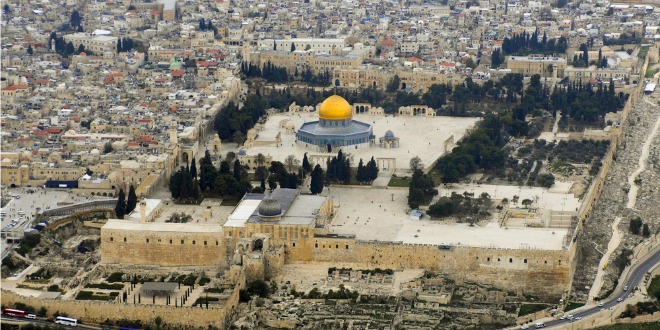
But this was not a simple matter of restoring one shrine. The Temple as it had developed over the centuries was not a single building. The actual sacred area included the altar, the Sanctum Sanctorum that was meant as God’s house, and a holy symbol or obelisk. This area could not be increased. Its plan is detailed out in the Bible and considered “the word of God”. It was, therefore, not possible or permissible for anyone to alter it. Furthermore, it contained some riches and so it needed a strong wall for its protection. However we know from the writings of Josephus that by the time Herod finished with his building program , the area was double what it had been when he had started, despite the fact that the actual Temple portion could not be increased. The largest increase was in the open part outside the Holy buildings, where those of his subjects who were not priests could pray. He turned the Mount Moriah, on which Solomon’s Temple had been built, into a rectangular platform, and doubled its size.
To do so he built enormous retaining walls, one of which, the Western Wall, remains today. This, of course, is also known as the Wailing Wall and is now the holiest site in Judaism.
The stones used in its construction are not of uniform size but are all more massive than anything previously known in Judean building. The eastern side faced the Mount of Olives. The preparations for the building were painstaking. They occupied some two years. A labour force of 10,000 workmen was assembled. They included 1000 priests, trained as masons and carpenters, to carry out the internal works to the Sanctuary where laymen were forbidden. 1000 carts and wagons transported the huge quantities of stone and other building materials. The building was started in 20 BC by levelling the Temple to its foundations. The basic new structure on these foundations was completed in 18 months. The complex of buildings and courtyards surrounding the Temple, and the adornment of them, however, took 46 years in all – in fact almost a generation beyond Herod’s death in 4 AD.
As you know, within a few years, in 70 AD, it was finally to be destroyed.
Herod’s Temple continued and still continues to be known as a mere alteration of the Second Temple, although as I said earlier, it was really the Third. Unlike the Temple it replaced, which was plain, utilitarian, and somewhat austere, Herod’s edifice was magnificent. Although he could not exceed the plan laid down in the Bible, he was able to double in height the porches and outside walls, as well as to cover them in marble. He was also able to create many ancillary buildings that became a part of the entire structure.
Before I leave the subject of Herod’s Temple, I can tell you that there is no doubt of its existence. There is not only the evidence of the western retaining wall, but also there have been some archaeological excavations on parts of the area that are not holy to Moslem or Jew. I mention this because no trace of the Temple of King Solomon has ever been found.
Some two or three years ago I read in the Daily Telegraph, of two Israeli professors from Tel Aviv University, who had excavated a temple on the plain of Megiddo in northern Israel, which you will know as Armageddon.
The professors have a theory that King Ahab, not Solomon who lived 100 years later, built the Temple. One of these professors is distantly related to my wife, and in a conversation I had with him after the article was published, he said that much work has been done in trying to find something of King Solomon’s Temple, without success. He closed the conversation with the remark that if archaeologists did not flnd anything of a building where they are told it had been, then they suspect that maybe there is nothing to be found, and on that basis the First Temple never was.
It gives one food for thought.
However, to revert to our story, I think that I have given enough information on the building works carried out by Herod to convince you of his qualifications as a Master Mason. But what of the rest of his story, and why has his press been, to put it mildly, somewhat condemning ? Certainly the image and the reputation he has left behind is more as a result of his cruelty and despotism, than his magnificent building works – and rightly, too!
When Herod was governor of the Galilee, he put to death a group of rebels. Almost certainly, they were not bandits as described by Josephus, but Jewish guerrillas, part of a small underground resistance movement against Antipater and the Roman power. Herod had insufficient authority to execute them, and as a result, he was called before the Sanhedrín, the only authority able to impose the death penalty. Before they could try him, Jerusalem was besieged and Herod fled to Rome. On his return as King one of his first actions was to revenge himself on the Sanhedrin. Forty five of their members were arrested and executed, their places being filled with Herod’s own supporters.
The Council was stripped of it judicial functions, and it was confined to clarifying points of religious doctrine.
As I mentioned earlier, Herod, to secure his position, had married, as his second wife, Mariamne the Hasmonean princess. As Herod became older he became obsessively suspicious of the Hasmoneans. Possibly his ambitions for the succession by his sons from his first wife had something to do with it. On various pretexts, he therefore had Mariamne, her mother, her younger brother, and, worse, the two sons he had with her, put to death. He also had killed two of the husbands of his sister, Salome, and his eldest son from his first wife and his nominal heir, Antipater. I could go on but I am sure you all have got the picture.
I think I can best summarise this aspect of Herod by a quotation from Flavius Josephus, whom you may know lived and wrote his history of the Jews about a hundred years after these events took place, and who, as I remarked before, did not like Herod.
He was no king but the cruellest tyrant who ever ascended the throne. He murdered a vast number of people and the lot of those he left alive was so miserable that the dead might count themselves fortunate.
He went on to say…
Within a few years the Jews suffered more misery through Herod than their forefathers had done in the long period since they left Babylon.
In order to carry favour with the Emperor Augustus, whose friendship had cooled because of Herod’s disputes with his sons, he desecrated the Temple by affixing to the front entrance of it, a large Golden eagle meant, presumably to represent the Imperial Roman Eagle. This image of a living creature upset the Pharisees. Herod was, at the time, extremely ill, and it was rumoured that he had died. Two Pharisee priests incited their pupils to climb the roof and remove the eagle, which was hacked into pieces. Herod had them burnt alive. A few days later, Herod died in great agony, at the age of 70, in the year 4 AD. He was buried on the top of the Herodium mount that he had created. His three remaining sons succeeded him.
It is not my brief here to detail the Herodian dynasty that followed, 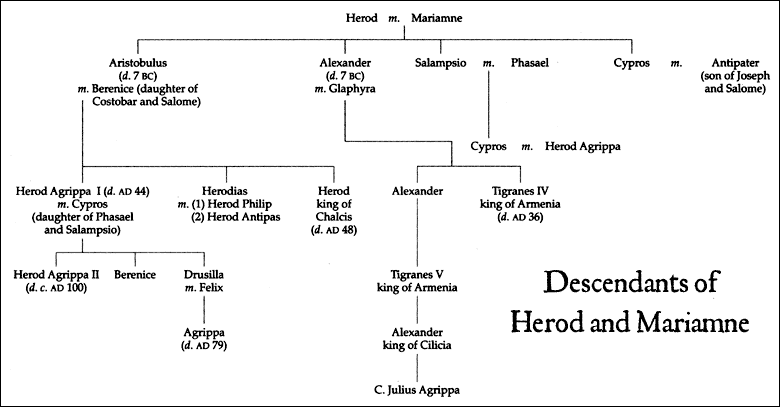 but it ended in 66 AD, after the death of Herod’s grandson Agrippa, who was brought up in Rome and was a close friend of the ill-fated and badly thought of Emperor Caligula. I am also not detailing the destruction of the Temple in 70 AD. I think that most, if not all of us, know about Titus and the removal of the valuables of the Temple to Rome. At this point the story of the bulk of the Jewish peoples in their land of Judaea more or less ends, and the Diaspora starts. The Jews were sent into exile – to Spain, to Central Europe, to Asia, and to so many other parts of the world. It was almost 2000 years later, in 1948, that some returned to create the modern state of Israel.
but it ended in 66 AD, after the death of Herod’s grandson Agrippa, who was brought up in Rome and was a close friend of the ill-fated and badly thought of Emperor Caligula. I am also not detailing the destruction of the Temple in 70 AD. I think that most, if not all of us, know about Titus and the removal of the valuables of the Temple to Rome. At this point the story of the bulk of the Jewish peoples in their land of Judaea more or less ends, and the Diaspora starts. The Jews were sent into exile – to Spain, to Central Europe, to Asia, and to so many other parts of the world. It was almost 2000 years later, in 1948, that some returned to create the modern state of Israel.
As for Herod, in one of the books, which I read while researching for this talk, is a comment which states: “On the factual record of his 33 year reign, Herod was one of the ablest and most successful rulers in Jewish history.”
In the same book it states that, “he was driven not by piety but by a potent blend of two other motives: the pride of a great builder and the political instincts of an unpopular ruler seeking the esteem of his subjects.”
This he never got, neither did his ability or successes supersede history’s memory of him as a cruel, power driven, and maybe, wicked man. For over 2000 years, Herod has been detested as one of the most wicked of men.
That Herod was not all monster, has, I hope, been evident from this story. He had ability and administrative vigour, he was loyal to his friends and trustworthy to the Romans whom he represented.
During his reign, the country was at peace, trade flourished and as I have shown, cities had been rebuilt and transformed. He championed the rights of overseas Jews, who always supported him financially. For the last 10 years of his life he was an extremely sick man, whose illness is now seen as being partially responsible for some of his later brutality, although this does not excuse or absolve it. In his defence, however, he could plead that he was only doing as the Romans did.
In this talk I have only been able to give a brief idea of the man. I hope that I have shown that he was a master builder, but also that he was much more than this. He is really worth your studying him at some length.
W. Bro. Ivan Greenwold PJGD – 27 October 2011 (Temple of Athene CC).
- His Majesty’s Servant , David Garrick Esq – Freemason ? - June 7, 2024
- Influencia de la Masonería en Chile - April 29, 2024
- Pomegranate in Freemasonry – its significance - March 11, 2024

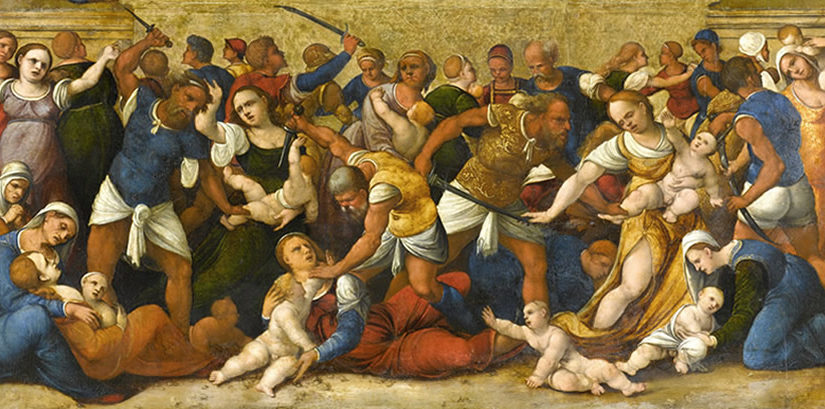
Hallo! Icch Auf den Merk geben Ihnen einen big thumb up für die ausgezeichnete Informationen Sie haben hier zu diesem Beitrag.
Ich bin immer wieder auff Ihre Website für mehr bald.
Just desire to say your article is as astonishing.
The clarity in your post is simply cool and i can assume you are an expert on this subject.
Well with your permission allow me to grab your feed to keep up to date with forthcoming post.
Thanks a million and please continue the enjoyable work. https://ketoprimal.net/
This is the perfect web site for anybody who wants to find out about this topic.
You know a whole lot its almost hard to argue
with you (not that I really would want to…HaHa). You certainly put a brand new spin on a subject that has been discussed for decades.
Great stuff, just excellent!
Hellо, I enjoy reaⅾing all of ʏouг article. I
ᴡanted tߋ write a little comment to suρport yߋu.